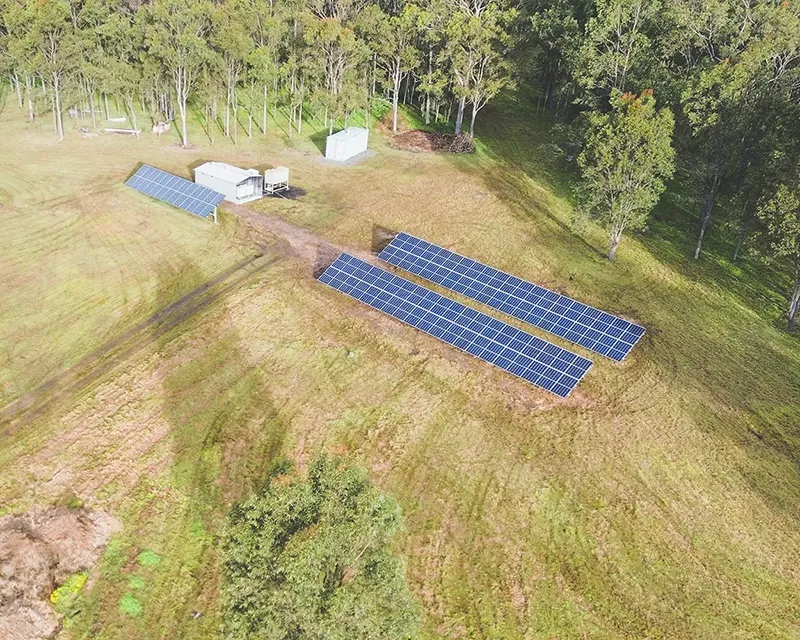

With the ongoing boom of electric vehicle adoption throughout Australia, we thought a quick overview of everything you need to know about EV charging would be useful.
Let's explore the basic Electric Vehicle charging types such as the different types of EV charging, plug types, and more!
To start off, there are different types of electric vehicle chargers that determine the speed that your electric vehicle can charge at. The industry calls the types Level 1, Level 2, and Level 3 charging.


Level 1 chargers are the slowest and most basic type of charger. They use a standard home outlet and can take up to 20 hours to fully charge an EV.
Commonly included with car purchases, level 1 chargers are what most EV owners already own without needing to buy an additional charger.
This can be suitable for EV owners with short comutes and who are happy to slosw charge it overnight.
(Up to 2.4kW)

Being the most common form of electric vehicle charging for homes, a level 2 EV charging station enables convenient charging right at home.
Including chargers like Tesla Wall Connector, myenergi zappi, and the Fronius Wattpilot, most level 2 charges are capable of providing 22kW, providing faster recharges.
This method needs a professional electrician to install.
(7-22kW)

DC fast charging is the fastest type of charging available, providing rapid rechargers, typically seen at supercharger stations on highways and other high-traffic areas.
Because level 3 charging provides DC power, it removes the need for the onboard EV inverter to convert the AC which is a bottleneck with AC charging.
(22-420kW)
With various electric vehicles, chargers, and types of charging, all the different charging solutions can be categorised into 3 categories; home EV charging, public EV charging, and workplace EV charging.
Home EV Charging Stations
(Level 1 & 2 Chargers)
Being one of the most convenient ways to charge electric vehicles, home EV charging enables EV owners to charge right from their garage or driveway for the simplest experience possible.
This method of charging is a great choice for those with predictable lifestyles to charge when they return from work.
Home Charging generally maxes out at aroud 22kW which only takes a few hours to charge your EV.
Public EV Charging Stations
(Level 2 & 3 Chargers)
Public EV charging stations are typically located in high-traffic areas like shopping centres or along highways, acting as a quick way to top electric vehicles up.
As a part of a larger network of chargers, public EV charging stations allow EV owners to go on extended long distance road trips without range anxiety.
Some charging stations vary in subscription and payment methods, so check beforehand for vehicle compatibility.
Workplace EV Charging Stations
(Level 2 & 3 Chargers)
As businesses choose to futureproof their commercial properties, workplace EV charging is a great benefit to provide employees who own an EV to charge whilst they're parked at work.
This can also be used to power electric vehicle fleets, keeping your company on the road.
Workplace electric vehicle charging can vary in speeds and levels, from simple 22kW three-phase charging to up to 420kW supercharging.
Businesses like the NRMA and the Australian Government have been investing in installations of public electric vehicle stations all over Australia, helping support the charging infrastructure for EV owners.
This ongoing investment allows for reduced range anxiety, and offers more flexible options for those who need a quick top up.
Range anxiety refers to the fear of running out of battery during a trip somewhere. It is definitely normal to think about, and is a concern for particularly newer EV-owners and those who are interested in them.
The good news is that as time progresses, battery capacities are getting larger and more efficient too. There
are also other ways you can minimise risk of running out of battery.
Plan Your Route
When travelling long distances with risks of travelling a long time without a charge, plan your trip's route to find EV charge stations on the way to your destination.
These stops can be as frequent as you'd like, depending your vehicle's battery range, route, and anxiety levels.
Charge More Frequently
Similar to a traditional combustion vehicle, topping up your fuel levels can help minimise risk of running out of battery mid-drive.
Instead of waiting until the battery is completely empty, charging as much as possible can reduce your range anxiety.
Upgrade to Longer-Range EV
With different EV variants available, there are long-range electric vehicles available that will allow for longer trips.
If you have the extra cash, investing in a larger battery capacity allows you to travel further on a single charge.

A dedicated home charger is a level 2 charger which typically ranges between 7-22kW.
This type of charger can be installed in a desired location like a driveway or garage, and is faster than basic level 1 charging via a wall outlet.
An installation requires an electrician like us, and can range in costs from 1 to a few thousand, depending on installation requirements, and the charger of choice.

A portable charger is a level 1 classed charger option which can be used to charge your electric vehicle very slowly, but is very useful for situations when there are no faster options available.
Most manufacturers include a portable charger with your electric vehicle.
Even though it sounds like some sort of backup power source, the 'portable' refers to the cable which can be plugged in to the abundant wall outlet.
Electric vehicles (EVs) come in a variety of types, each with their own unique characteristics and benefits.
Plug-in Hybrid Electric Vehicles (PHEVs): PHEVs have both an electric motor and a fuel engine. They can run on electricity alone for a certain distance, after which the fuel engine takes over. PHEVs have a shorter electric-only range than BEVs, but are more flexible and can be refueled at fuel stations
Hybrid Electric Vehicles (HEVs): HEVs have an electric motor and a fuel engine, but can't be plugged in to recharge. Instead, they rely on regenerative braking and the fuel engine to recharge the battery. HEVs have a shorter electric-only range than PHEVs, but are more fuel-efficient than traditional fuelled vehicles.
Battery Electric Vehicles (BEVs): BEVs are fully electric vehicles that are powered entirely by a battery. They don't have an internal combustion engine, and instead rely on an electric motor to power the wheels. BEVs typically have a longer range than other types of EVs, but may require longer charging times.
Add your content here.
In addition to the three main types of EV chargers (Level 1, Level 2, and DC fast charging), there are also different types of charging ports that are used by EVs. Plug types vary between AC and DC plugs, which depend on the country.
When charging from your home (AC), electric vehicles will have various sized inverters to convert that AC power to the battery's DC power. This is a factor of limitation for AC EV charging, so that is why DC charging is better suited to fast-charging.
AC EV charging plug types are commonly installed for residential properties that range from 7-22kW of power. The built-in inverter in the EV is also a limitation.
This AC charging plug has a two-pin design and is commonly used in North American and Japanese EVs. It's used for Level 1 and Level 2 charging.
The type 2 plug has a seven-pin design and is the standard in European EVs.
It includes 7 pins for three-phase charging and is used for Level 1, Level 2, and DC fast charging.
This AC charging plug is used by EVs in China. It's similar in design to Type 2, but with a different configuration of pins. GB/T plugs are used for Level 1, Level 2, and DC fast charging.
Tesla vehicles are equipped with the Tesla Type 2 charger that can be used with a Tesla-specific adapter for AC charging.
DC plug types on the other hand are typically used more for public and fleet charging as the DC to DC reduces limitations of the onboard electric vehicle inverter.
This DC charging plug is used by some Japanese and European EVs, such as the Nissan Leaf and Mitsubishi i-MiEV. CHAdeMO plugs are used for DC fast charging and can provide a significant amount of range in a short amount of time.
Similar to the AC Type 2, the CCS type 2 port includes additional pins for fast charging and is
compatible with Level 1, Level 2, and DC fast charging.
CCS Type 2 is also known as CCS2.
This DC charging plug is used in European EVs.
This DC charging plug is used by EVs in China. It's similar in design to CCS Type 2 but with a different configuration of pins. GB/T plugs are used for Level 1, Level 2, and DC fast charging.
Tesla vehicles are equipped with a proprietary DC fast charging plug that can only be used with Tesla Chargers (Tesla Gen 3 Wall connector & Superchargers).
We install commercial EV Charging solutions, such as; fleet charging for businesses wanting to supercharge
their electric vehicle fleets, as well as public station charging for high capacity electric vehicle charging on the-go.
Each country around the world will have their own EV Charging standards and main plug types. Here are worldwide EV charging plug types
for charging.

Australia
Australia uses primarily the Type 2 EV for AC and the CCS Type 2 for DC. There are also some CHAdeMO vehicles.
United States
As the first company to popularise Electric Vehicles, the EV population mostly consist of older EV's that still use Type 1 connectors for AC, and CCS Type 1 for DC. Type 2 is being rolled out in replacement.
Japan
Japan mostly uses Type 1 connectors for their AC EV Charging, along with a combination of CCS Type 2 and CHAdeMO connectors.
Europe
Europe's primary connectors consist of Type 2 and CCS Type 2 connections.
China
China uses both GB/T Connections for both their AC and DC charging. The CHAdeMO and CCS Type 2 connectors are also used by some Chinese and international EV models.
Worldwide
All countries have access and use the Tesla connector.
It's important to note that not all EVs are compatible with all types of charging ports. Before using a public charging station, be sure to check your vehicle's compatibility with the charging port and connector type used at the station.
Here are some frequently asked questions (FAQs) and answers about EV charging:
If you'd like to learn more about the world of battery storage, here are specific articles around the EV charging industry.
If you're interested in learning more about renewables, here are our ad-free articles to help
you gain knowledge and make more informed decisions.
Not only are we specialists in solar power, but we pride ourselves in being leading installers in battery
storage, as well as EV charging for homes and businesses. For solar and battery systems, we offer both on and off-grid solutions for a
range of applications.

Elite Power Group are Newcastle's leading solar and electrical installers, providing professional, long-lasting solutions for residential and commercial homes across Newcastle and the Hunter.

Installers of battery storage systems for solar energy storage. Maximise your solar investment with battery storage in Newcastle, Maitland, and Hunter.

Never pay another electricity bill by going completely off-grid. Standalone, 100% off-grid solar and battery solutions available.